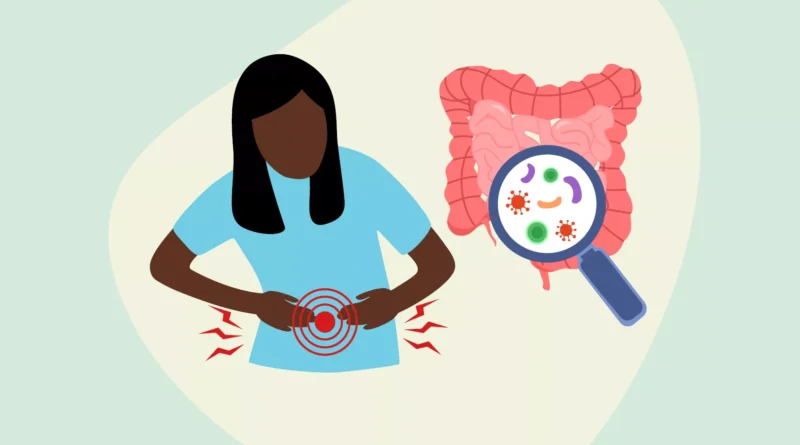Signs You Might Have Food Poisoning: A Quick Guide
Contents
Intro
The Food poisoning is a common yet unpleasant experience that occurs when you are consume contaminated food or water. The symptoms of food poisoning can range from mild discomfort to severe illness, & it’s important to recognize the signs so you can seek appropriate medical attention if needed. In this quick guide, we will discuss the signs you might have food poisoning, its causes, symptoms, and prevention tips to help you stay safe & healthy.
Understanding Food Poisoning and Its Causes
At the core of many unpleasant dining experiences, food poisoning stands out as a result of ingesting contaminants that lurk in food or beverages. These harmful intruders are—bacteria, viruses, parasites, and toxins—find their way into our meals through various breaches in food safety practices. One of the primary culprits behind food poisoning is the mishandling of food, which can occur at any stage from farm to table, including during processing, storage, and preparation phases. Another significant risk factor is consuming raw or inadequately cooked meats and seafood, which may harbor dangerous pathogens.
Additionally, the environment in which food is prepared can play a significant role in the contamination process. Kitchen surfaces, utensils, and even the hands of those preparing food can introduce or spread contaminants if not properly sanitized. Foods left unrefrigerated for extended periods also pose a risk, as many bacteria thrive and multiply rapidly at room temperature.
The specific symptoms one may experience depend on the type of pathogen ingested. For example, bacteria like Salmonella and E. coli are known for causing severe gastrointestinal distress, while viruses such as norovirus can lead to similar symptoms. Certain parasites found in contaminated water or undercooked foods can also lead to food poisoning, further underscoring the importance of adhering to food safety guidelines to prevent these unwanted guests from spoiling a meal.
The Initial Signs of Food Poisoning You Shouldn’t Ignore
Recognizing the early symptoms of food poisoning is crucial in managing its impact and seeking timely medical care if necessary. The first indicators often emerge within hours to a few days following the ingestion of contaminated food, marking the body’s immediate reaction to the unwanted invaders. One of the earliest and most common symptoms is nausea, a distressing sensation that frequently precedes vomiting. Vomiting serves as the body’s way of expelling the toxins or pathogens ingested. Alongside these, diarrhea is another prevalent symptom, occurring as the body attempts to flush out the contaminants through increased bowel movements.
Abdominal cramps, a symptom characterized by sharp and intermittent pain in the stomach area, are also a tell-tale sign. These cramps result from the stomach and intestines reacting to the harmful organisms. Fever may accompany these symptoms, indicating that the body is actively fighting off the infection.
Given the commonality of these symptoms with other illnesses, it might be easy to dismiss them as minor or unrelated to food poisoning. However, their sudden onset following a meal, especially one involving foods known to be high-risk, should raise suspicion. Paying attention to these early warnings allows for quicker response actions, such as hydration and rest, and can help in identifying the source of contamination to prevent further cases. It’s important to monitor these symptoms closely as they can rapidly escalate, necessitating medical intervention, particularly in vulnerable populations such as young children, the elderly, and individuals with compromised immune systems.

When Symptoms Escalate: Severe Food Poisoning Indicators
While many cases of food poisoning present with relatively mild symptoms that can be managed at home, it’s crucial to be vigilant for signs indicating a more serious condition. These severe symptoms are often a call to action, signaling the need for immediate medical intervention. Persistent or forceful vomiting, which can prevent the body from retaining fluids, is one such symptom. This can quickly lead to severe dehydration, characterized by symptoms such as a marked decrease in urination, extreme thirst, dizziness, or lightheadedness.
Another alarming sign is the presence of blood in stools, which could indicate a more severe infection or damage to the gastrointestinal tract. A high fever, typically exceeding 101°F (38.3°C), suggests a significant immune response to the infection and can also signal a more serious form of food poisoning. Additionally, any signs of shock, including confusion, rapid heartbeat, palpitations, or a sudden drop in blood pressure, necessitate immediate emergency care.
These symptoms underscore the body’s distress signal in response to a potent pathogen or toxin and highlight the potential for complications without prompt treatment. Recognizing these severe indicators of food poisoning and acting quickly by seeking professional medical care can be critical in preventing more serious health outcomes.
The Timeline: How Soon Symptoms Appear After Eating
The onset of food poisoning symptoms is closely tied to the specific contaminant ingested, making the timeline for symptom emergence quite variable. Typically, symptoms can begin to manifest anywhere from a mere few hours after consumption to several days later. This variability is crucial for pinpointing the offending meal or food item. For instance, symptoms caused by staphylococcus aureus can appear as early as 1 to 6 hours post-exposure, primarily because the toxin it produces acts quickly. Conversely, pathogens like norovirus and salmonella might take anywhere from 12 hours to 3 days to trigger symptoms, as the body needs time to react to these invaders.
Certain contaminants, such as the parasite giardia, may not elicit symptoms until a week or more after ingestion, complicating the process of identifying the source of contamination. This delay underscores the importance of considering recent dietary history when symptoms emerge, especially if the timeline extends beyond the last 24 hours. Additionally, the quantity of contaminated food consumed can influence the rapidity and severity of symptom onset, with larger amounts potentially leading to quicker and more severe reactions.
Understanding this timeline can aid in tracing back to potential sources of foodborne illness, thereby helping individuals and health authorities prevent further cases. It’s also vital for medical professionals when diagnosing and treating suspected cases of food poisoning, as the timing of symptom onset can provide clues about the nature of the pathogen involved.

High-Risk Foods That Can Cause Food Poisoning
Navigating the landscape of what to eat can sometimes feel like a minefield, particularly when considering the foods most susceptible to harboring the pathogens responsible for food poisoning. Understanding which items carry a higher risk is crucial in adopting safer eating habits. Meats that haven’t been cooked to the recommended internal temperatures offer a breeding ground for bacteria like E. coli and Salmonella. Similarly, raw or lightly cooked eggs, a staple in many breakfast dishes and desserts, can also pose a risk if contaminated with Salmonella.
Seafood, especially when raw or undercooked, as found in dishes like sushi and ceviche, requires careful handling and preparation to avoid introducing harmful microorganisms. Dairy products, when unpasteurized, bypass the safety net of pasteurization, which eliminates many of the dangerous bacteria these products can contain.
The risks extend beyond animal products to include fruits and vegetables. These can become vectors for foodborne illnesses if they come into contact with contaminated water, soil, or surfaces during growing, harvesting, or processing. Pre-cut or pre-washed produce, while convenient, may be particularly vulnerable if cross-contamination occurs post-harvest.
Even with stringent safety measures, no food item is completely risk-free. However, being informed about which foods are more likely to be associated with foodborne illnesses can guide safer choices, such as opting for well-cooked meals and diligently washed produce. Additionally, understanding the potential hazards associated with certain foods can prompt more cautious handling and preparation practices, further minimizing the risk of food poisoning.
Prevention Tips to Avoid Food Poisoning
Minimizing the risk of food poisoning involves incorporating several key practices into your daily routines, especially concerning food preparation and storage. Initiating these measures can significantly decrease the likelihood of encountering harmful pathogens. First, ensure that your hands are clean by washing them with soap and water before and after you prepare food. This simple step can prevent the transfer of bacteria to your meals.
When cooking meats, seafood, and eggs, it’s essential to reach the recommended internal temperatures to effectively eliminate any present bacteria. Use a food thermometer to verify these temperatures, as visual cues alone may not be reliable. Proper food storage is equally critical; refrigerate or freeze perishables, prepared foods, and leftovers within two hours of cooking to thwart bacterial growth.
To avert cross-contamination, designate specific cutting boards and utensils for raw meat and another set for produce. This practice helps keep bacteria from raw meat away from foods that are typically consumed raw.
Before eating or cooking, wash fruits and vegetables under running water to remove any lingering contaminants. Even if you plan to peel produce, it’s advisable to wash it first to prevent dirt and bacteria from transferring from the exterior to the interior as you peel.
Exercising caution when dining out is also paramount, especially in settings where food handling practices may be less visible, such as buffets and salad bars. Opting for establishments that display good hygiene practices can further safeguard against foodborne illnesses.
By adhering to these prevention strategies, you can actively reduce the risk of food poisoning, ensuring that your dining experiences remain safe and enjoyable.





6i0226
ppybcf
Generally I don’t read article on blogs, but I wish to say that this write-up very forced me to try and do it! Your writing style has been surprised me. Thanks, very nice post.